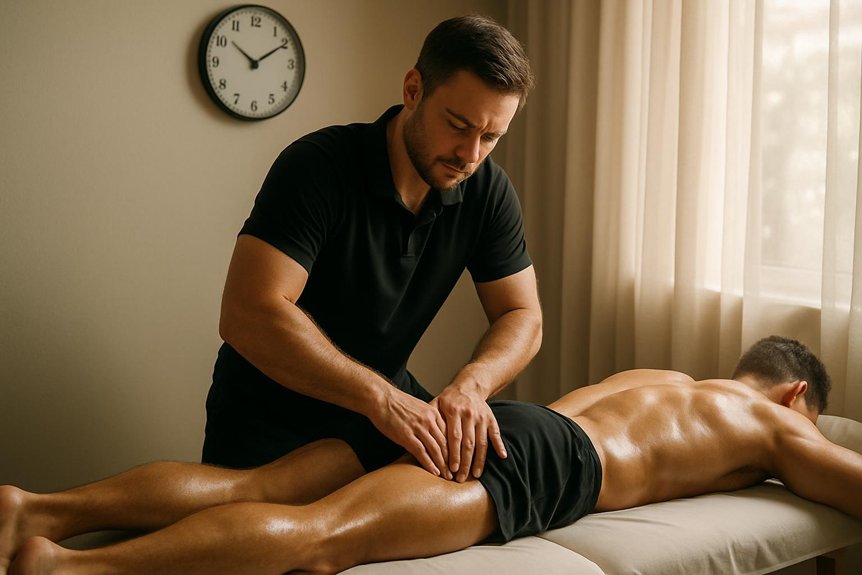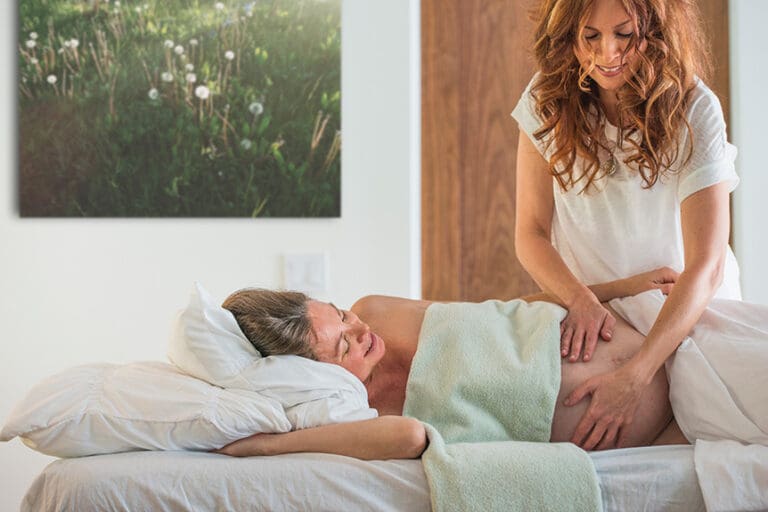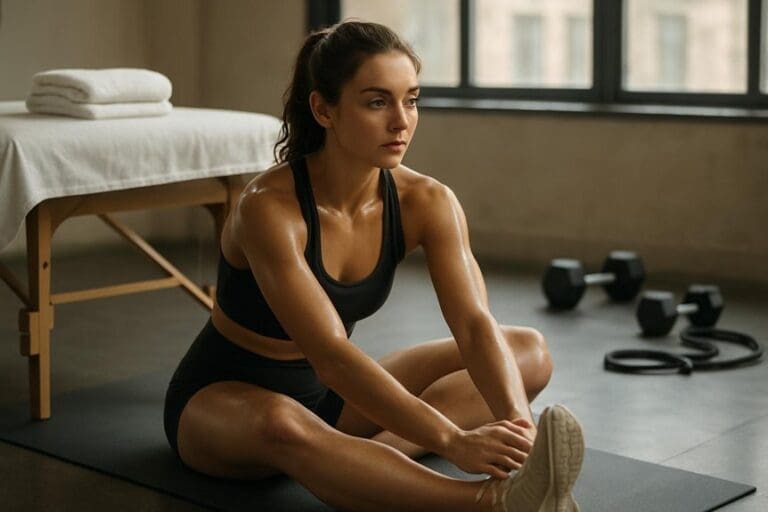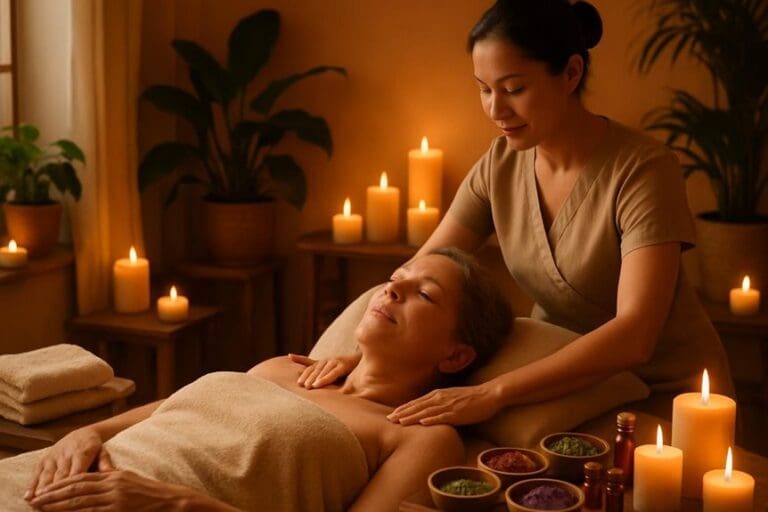Most athletes do well with 60 minutes for assessment and targeted soft‑tissue work. Choose 30–45 minutes to address 1–2 problem areas, especially during taper weeks or between events. Book 75–90 minutes for full‑body treatment, layered techniques, or holistic pre/post‑event care. Lighter pressure is best 24–72 hours around competition. Maintenance is typically every 2–4 weeks; heavy training may need weekly sessions. Hydrate, arrive warm, and communicate priorities. The ideal duration depends on goals, training load, and tissue response—details follow.
Factors That Determine the Ideal Athletic Massage Duration
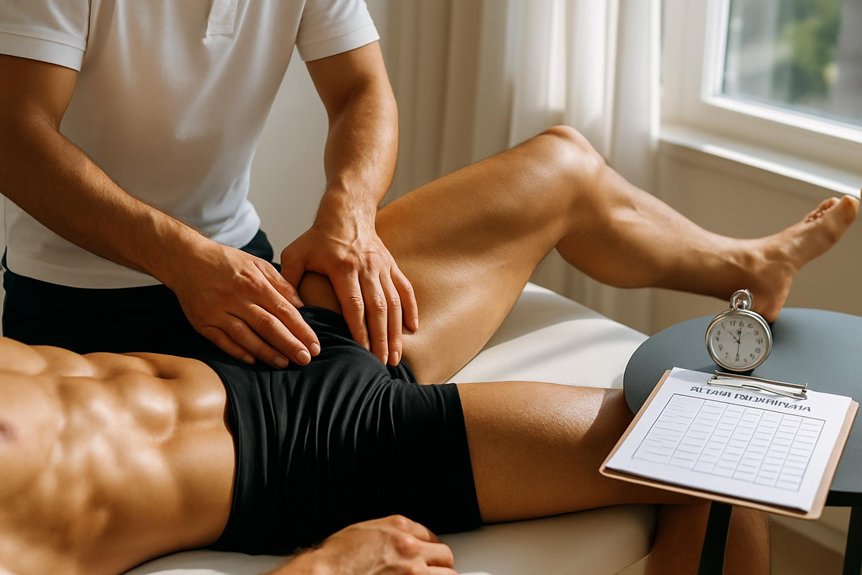
While there is no one-size-fits-all length for a athletic massage, the ideal duration depends on a client’s goals, training load, injury status, and the number of areas requiring focused work.
Evidence-based planning starts with intention: recovery, performance prep, or rehabilitation. Heavier training loads and multi-joint soreness justify longer time to address prime movers and stabilisers with precise sequencing.
Acute injuries or post-event fatigue call for gentler pacing and added assessment. Chronic restrictions often need methodical myofascial and neuromuscular techniques applied without rushing.
At Spa & Massage, therapists triage priority regions first, then allocate minutes per area, typically balancing front/back chains. They consider tissue reactivity, pain thresholds, and breath cadence to guide depth and tempo.
In some cases, incorporating deep tissue massage benefits can enhance the effectiveness of a sports session, especially when working through chronic tension or stubborn knots.
Practical tip: communicate today’s workout, tenderness, and upcoming events to co-create an exact, effective duration.
30-Minute Sports Massage: When a Short Session Works Best
Building on the principle that duration follows intention, a focused 20–30 minute athletic massage can be the most effective choice when time, recovery needs, or training cycles call for precision rather than breadth.
Spa & Massage therapists use this window for targeted work on one or two regions—calves before a run, forearms for racket sports, or glutes/hips for cyclists—employing specific deep-tissue and myofascial techniques, then gentle flushing to restore circulation.
Short sessions suit taper weeks, between-competition maintenance, and same-day recovery when a full treatment would be excessive. Clients are guided to arrive warm, hydrate, and state a single priority.
In our clinics, therapists avoid aggressive pressure that might compromise performance, recommend light mobility afterward, and schedule 48–72 hours before key events. The aim: precise relief without systemic fatigue.
45-Minute Athletic Massage: Focused Work With Added Mobility
A 30-minute athletic massage can prioritise one or two targeted muscle groups while incorporating brief, evidence-based mobility drills to lock in range-of-motion gains.
At Spa & Massage, therapists typically combine focused soft-tissue work (e.g., quadriceps and hip flexors or calves and ankles) with joint-specific active movements to reinforce improved tissue extensibility.
Clients are advised to arrive with a clear performance goal, and to expect therapist-led mobility cues they can repeat post-session for sustained benefit.
Targeted Muscle Groups
Targeted muscle work in a 30-minute athletic massage prioritises one or two high-value regions—commonly calves and hamstrings for runners, hip flexors and glutes for cyclists, or shoulders and forearms for racquet and desk-based clients—then layers mobility to consolidate gains.
Spa & Massage therapists begin with a brief screening: pain location, training load, and movement that provokes symptoms. They apply firm, slow strokes, myofascial release, and precise trigger-point holds, progressing from broad warming to specific fiber-tracking.
Evidence supports short, focused bouts for reducing perceived stiffness and restoring range. Practical plan: choose one primary chain, test a movement pre-session, work proximally to distally, then retest.
Clients are advised to hydrate, perform gentle active range that evening, and book follow-up if relief is short-lived or symptoms refer.
Mobility Drills Integration
In a 30-minute athletic massage, mobility drills are integrated to convert tissue gains into usable range and better movement quality. At Spa & Massage, therapists pair focused soft-tissue work with brief, precise drills: controlled articular rotations, end-range isometrics, and band-assisted joint glides. This sequence consolidates neural control, reduces protective tone, and reinforces safer mechanics.
Guidance is simple and intimate: breathe slowly, move within a mild stretch, and stop before pain. Two to three joints are prioritised—often hips, thoracic spine, or ankles—based on the day’s sport demands. Each drill lasts 30–60 seconds, repeated for 2–3 sets between hands-on bouts.
Clients leave with 2–4 home drills to perform daily. In our clinics, this approach improves carryover, supporting consistent training and fewer flare-ups.
60-Minute Athletic Massage: The Standard for Most Athletes
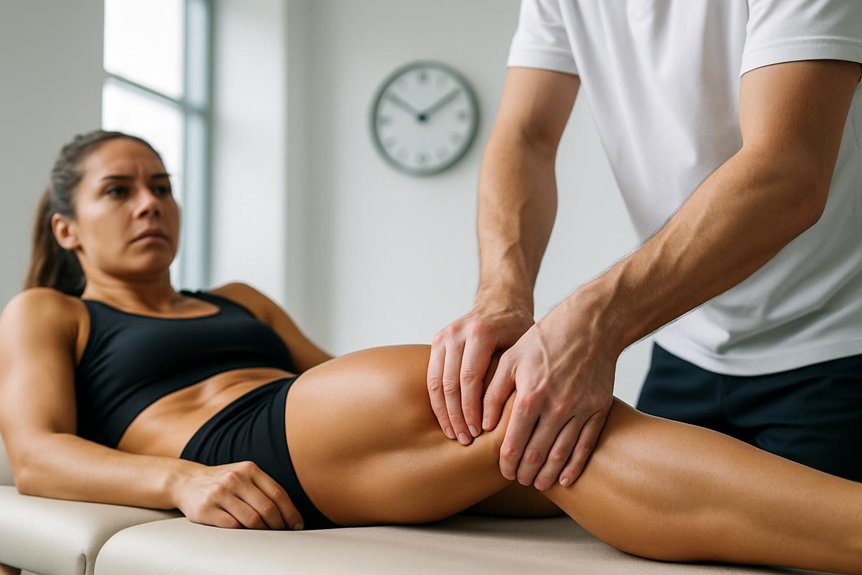
A 60-minute athletic massage typically follows an ideal session breakdown: 10–15 minutes of assessment and warm-up, 35–40 minutes of targeted deep tissue and myofascial work, and 5–10 minutes for recovery-focused stretching and reassessment.
This duration allows all-encompassing coverage for full body maintenance while still prioritising two to three key problem areas.
At Spa & Massage, therapists use this format to optimise performance and recovery by improving tissue quality, restoring range of motion, and reducing post-session soreness.
Ideal Session Breakdown
Building an effective athletic massage around 60 minutes gives most athletes enough time for assessment, focused work on priority muscle groups, and recovery-oriented techniques.
Spa & Massage therapists typically allocate 5–10 minutes to a concise intake and movement screen, identifying current load, training goals, and red flags.
The next 35–40 minutes target two to three priority regions using firm, slow strokes, myofascial release, and neuromuscular techniques, adjusting pressure to tolerance and breath.
Fifteen minutes close the session with flushing strokes, gentle stretching, and parasympathetic downregulation to reduce tone without provoking soreness.
Actionable guidance: arrive hydrated, share recent training data, and agree on one clear outcome (e.g., freer hip rotation).
In our clinics, therapists document responses and set simple post-session cues: light mobility, hydration, and 24-hour load moderation.
Coverage for Full Body
Most athletes achieve extensive full-body coverage with a 60-minute athletic massage, provided the session is structured with clear priorities. Evidence supports allocating time by training load: larger muscle groups and current hotspots first, then supportive chains.
At Spa & Massage clinics, therapists typically map the body in circuits—posterior chain (calves, hamstrings, glutes, back), then anterior chain (quads, hip flexors, chest), with shoulders, forearms, and feet integrated as needed.
For practical pacing, they recommend 15–20 minutes on primary problem areas, 25–30 minutes on global tissue preparation, and the remainder for symmetry checks and joint mobility.
Clients are encouraged to state one non‑negotiable area at intake. If multiple regions require detail work, a 75–90 minute session is advised.
Consistent booking maintains coverage without rushing touch quality.
Performance and Recovery Benefits
When scheduled at 60 minutes, a athletic massage delivers measurable gains in performance readiness and recovery, provided the session targets load-bearing chains and current hotspots.
Evidence supports improved range of motion, reduced perceived soreness, and enhanced neuromuscular activation within 24–48 hours.
In Spa & Massage clinics, therapists prioritise calves, hamstrings, glutes, hip flexors, thoracolumbar fascia, and shoulders, sequencing deeper work after a brief warm-up of myofascial gliding.
Actionable guidance: book 24–72 hours before key sessions to prime tissue compliance; within 2–12 hours post‑event for recovery with lighter pressure.
Hydrate, walk 5–10 minutes afterward, and perform gentle mobility for hips and ankles.
Many athletes add focused diaphragm release to downshift the nervous system.
Our therapists document response and adjust pressure, cadence, and tool use to maintain gains across training cycles.
75–90 Minutes: Full-Body Recovery and Pre-Event Prep
Why choose 90 minutes for a athletic massage? It allows thorough, head‑to‑toe work with time to assess movement, address multiple hotspots, and integrate recovery and performance goals in one session. Evidence supports longer sessions for layered techniques—myofascial release, deep tissue, and neuromuscular work—without rushing the nervous system.
At Spa & Massage in London, therapists use the first minutes to test range of motion and palpate trigger points, then sequence: posterior chain, hips, calves, feet; upper back, shoulders, forearms; finishing with neck and breathing resets.
For pre‑event prep (24–72 hours out), pressure stays moderate, with rhythmic effleurage, active release, and gentle stretching to prime tissues while avoiding soreness.
For full‑body recovery, they add slower fascial glides, lymphatic strokes, and targeted decompression. Clients leave balanced, limber, and event‑ready.
How Often Should You Book and For How Long
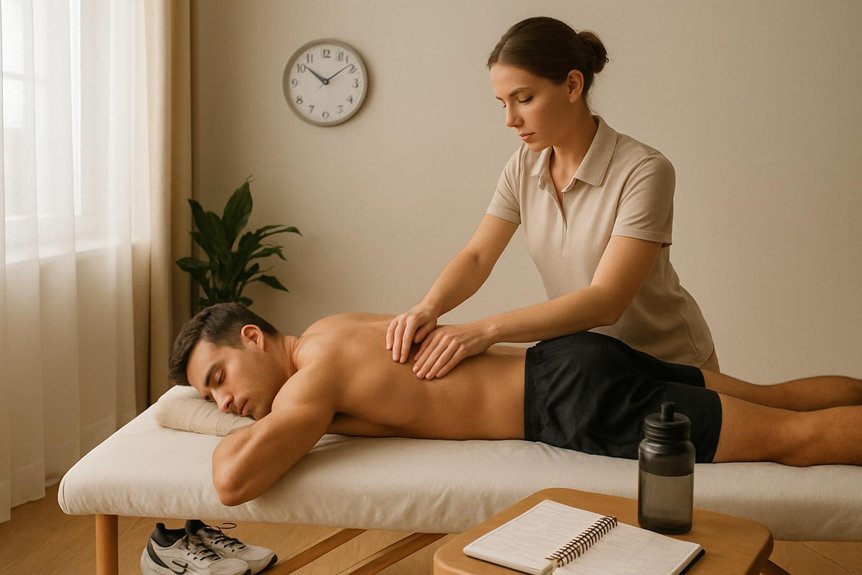
An effective booking cadence depends on training load, injury history, and recovery goals, with session length matched to the focus of each visit.
For most active adults, Spa & Massage recommends a 60-minute athletic massage every 2–4 weeks to maintain tissue quality and range of motion.
During heavy training blocks, weekly 45–60 minute sessions help manage cumulative fatigue.
When addressing a specific issue—tight calves, hamstring strain, or shoulder overload—shorter, targeted 30–45 minute appointments twice in the first 10–14 days can accelerate progress.
Tapering before an event, clients often book a 45–60 minute session 3–5 days prior; after competition, a gentle 45 minutes within 24–72 hours supports recovery.
Those with recurrent injuries benefit from a steady biweekly rhythm, reassessed every 6–8 weeks to refine frequency and duration.
What to Expect at Spa & Massage and How We Tailor Session Length
Building on the recommended booking cadence and durations, Spa & Massage outlines a clear process for tailoring session length from the moment a client arrives. A brief intake clarifies training load, pain patterns, recovery goals, and time constraints.
Therapists then perform a focused movement screen and palpation to prioritise regions—commonly calves, hamstrings, hips, lumbar spine, shoulders.
Based on findings, 30 minutes targets one area with precision; 45–60 minutes treats a primary region plus supporting chains; 75–90 minutes integrates full-body assessment, corrective techniques, and measured recovery work.
In our clinics, therapists blend deep tissue, sports-specific stretching, neuromuscular techniques, and breath pacing to match pressure and tempo to the client’s nervous system.
Session plans include aftercare, hydration guidance, and home mobility drills to extend results between visits.
Conclusion
In closing, the article clarifies that session length should match goals, load, and tissue tolerance. One striking figure: fascia can take up to 72 hours to remodel after deep work, illustrating why spacing longer sessions supports recovery. Readers are guided to choose 30 minutes for targeted maintenance, 45–60 for focused performance, and 75–90 for full-body resets or event prep, while coordinating frequency with training blocks. Spa & Massage structures duration around assessment, measurable outcomes, and post-session plans.
